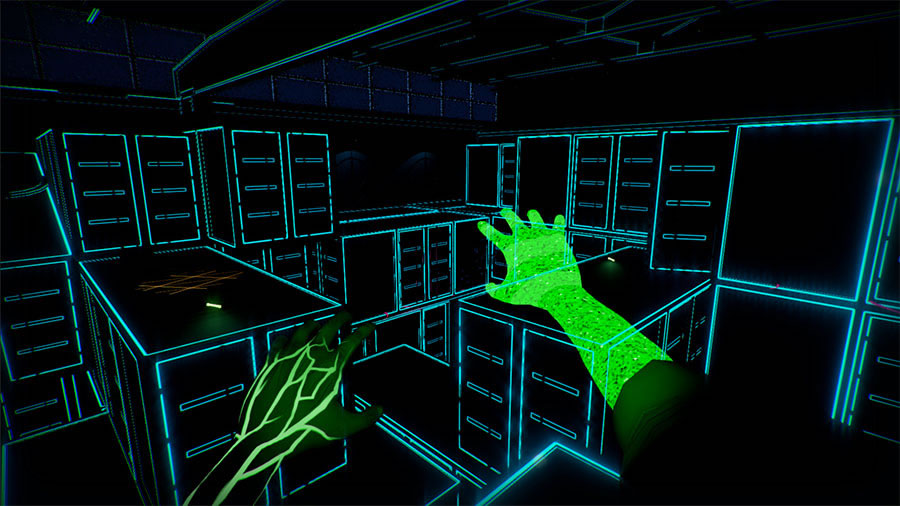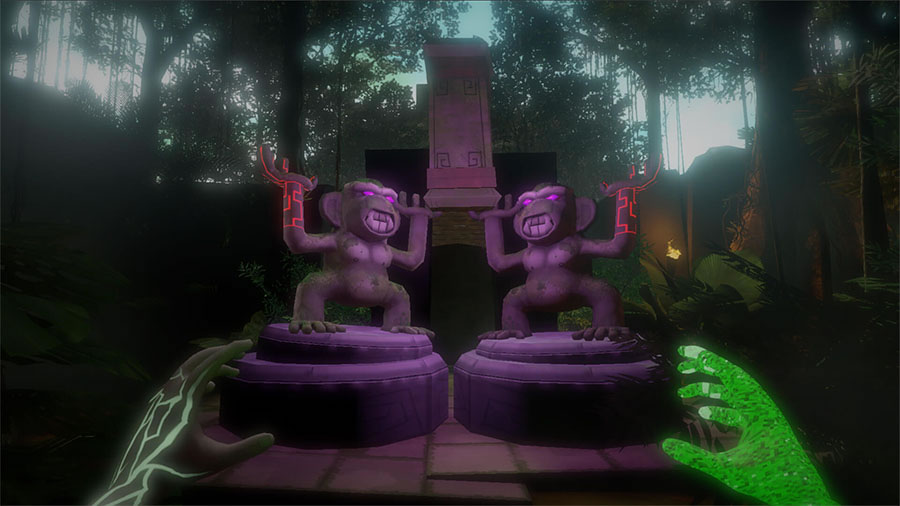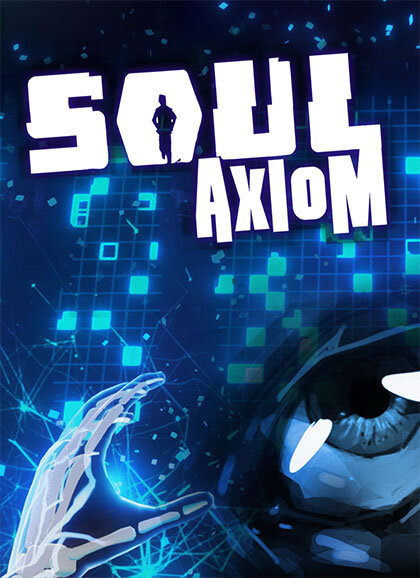- CLASSIC MAGAZINES
- REVIEW CREW
A show recapping what critics thought back
when classic games first came out! - NEXT GENERATION'S BEST & WORST
From the worst 1-star reviews to the best
5-stars can offer, this is Next Generation! - NINTENDO POWER (ARCHIVE)
Experience a variety of shows looking at the
often baffling history of Nintendo Power! - MAGAZINE RETROSPECTIVE
We're looking at the absolutely true history of
some of the most iconic game magazines ever! - SUPER PLAY'S TOP 600
The longest and most ambitious Super NES
countdown on the internet! - THEY SAID WHAT?
Debunking predictions and gossip found
in classic video game magazines! - NEXT GENERATION UNCOVERED
Cyril is back in this spin-off series, featuring the
cover critic review the art of Next Generation! - HARDCORE GAMER MAGAZING (PDF ISSUES)
Download all 36 issues of Hardcore Gamer
Magazine and relive the fun in PDF form!
- REVIEW CREW
- ELECTRONIC GAMING MONTHLY
- ELECTRONIC GAMING MONTHLY RANKS
From Mario to Sonic to Street Fighter, EGM
ranks classic game franchises and consoles! - ELECTRONIC GAMING MONTHLY BEST & WORST
Counting down EGM’s best and worst reviews
going year by year, from 1989 – 2009! - ELECTRONIC GAMING BEST & WORST AWARDS
11-part video series chronicling the ups and
downs of EGM’s Best & Worst Awards!
- ELECTRONIC GAMING MONTHLY RANKS
- GAME HISTORY
- GAME OVER: STORY BREAKDOWNS
Long-running series breaking down game
stories and analyzing their endings! - A BRIEF HISTORY OF GAMING w/ [NAME HERE]
Real history presented in a fun and pithy
format from a variety of game historians! - THE BLACK SHEEP
A series looking back at the black sheep
entries in popular game franchises! - INSTANT EXPERT
Everything you could possibly want to know
about a wide variety of gaming topics! - FREEZE FRAME
When something familiar happens in the games
industry, we're there to take a picture! - I'VE GOT YOUR NUMBER
Learn real video game history through a series
of number-themed episodes, starting at zero! - GREAT MOMENTS IN BAD ACTING
A joyous celebration of some of gaming's
absolute worst voice acting!
- GAME OVER: STORY BREAKDOWNS
- POPULAR SHOWS
- DG NEWS w/ LORNE RISELEY
Newsman Lorne Riseley hosts a regular
series looking at the hottest gaming news! - REVIEW REWIND
Cyril replays a game he reviewed 10+ years
ago to see if he got it right or wrong! - ON-RUNNING FEUDS
Defunct Games' longest-running show, with
editorials, observations and other fun oddities! - DEFUNCT GAMES QUIZ (ARCHIVE)
From online quizzes to game shows, we're
putting your video game knowledge to the test!- QUIZ: ONLINE PASS
Take a weekly quiz to see how well you know
the news and current gaming events! - QUIZ: KNOW THE GAME
One-on-one quiz show where contestants
find out if they actually know classic games! - QUIZ: THE LEADERBOARD
Can you guess the game based on the classic
review? Find out with The Leaderboard!
- QUIZ: ONLINE PASS
- DEFUNCT GAMES VS.
Cyril and the Defunct Games staff isn't afraid
to choose their favorite games and more! - CYRIL READS WORLDS OF POWER
Defunct Games recreates classic game
novelizations through the audio book format!
- DG NEWS w/ LORNE RISELEY
- COMEDY
- GAME EXPECTANCY
How long will your favorite hero live? We crunch
the numbers in this series about dying! - VIDEO GAME ADVICE
Famous game characters answer real personal
advice questions with a humorous slant! - FAKE GAMES: GUERILLA SCRAPBOOK
A long-running series about fake games and
the people who love them (covers included)! - WORST GAME EVER
A contest that attempts to create the worst
video game ever made, complete with covers! - LEVEL 1 STORIES
Literature based on the first stages of some
of your favorite classic video games! - THE COVER CRITIC
One of Defunct Games' earliest shows, Cover
Critic digs up some of the worst box art ever! - COMMERCIAL BREAK
Take a trip through some of the best and
worst video game advertisements of all time! - COMIC BOOK MODS
You've never seen comics like this before.
A curious mix of rewritten video game comics!
- GAME EXPECTANCY
- SERIES ARCHIVE
- NINTENDO SWITCH ONLINE ARCHIVE
A regularly-updated list of every Nintendo
Switch Online release, plus links to review! - PLAYSTATION PLUS CLASSIC ARCHIVE
A comprehensive list of every PlayStation
Plus classic release, including links! - RETRO-BIT PUBLISHING ARCHIVE
A regularly-updated list of every Retro-Bit
game released! - REVIEW MARATHONS w/ ADAM WALLACE
Join critic Adam Wallace as he takes us on a
classic review marathon with different themes!- DEFUNCT GAMES GOLF CLUB
Adam Wallace takes to the links to slice his way
through 72 classic golf game reviews! - 007 IN PIXELS
Adam Wallace takes on the world's greatest spy
as he reviews 15 weeks of James Bond games! - A SALUTE TO VAMPIRES
Adam Wallace is sinking his teeth into a series
covering Castlevania, BloodRayne and more! - CAPCOM'S CURSE
Adam Wallace is celebrating 13 days of Halloween
with a line-up of Capcom's scariest games! - THE FALL OF SUPERMAN
Adam Wallace is a man of steel for playing
some of the absolute worst Superman games! - THE 31 GAMES OF HALLOWEEN
Adam Wallace spends every day of October afraid
as he reviews some of the scariest games ever! - 12 WEEKS OF STAR TREK
Adam Wallace boldly goes where no critic has
gone before in this Star Trek marathon!
- DEFUNCT GAMES GOLF CLUB
- DAYS OF CHRISTMAS (ARCHIVE)
Annual holiday series with themed-episodes
that date all the way back to 2001!- 2015: 30 Ridiculous Retro Rumors
- 2014: 29 Magazines of Christmas
- 2013: 29 Questionable Power-Ups of Christmas
- 2012: 34 Theme Songs of Christmas
- 2011: 32 Game Endings of Christmas
- 2010: 31 Bonus Levels of Christmas
- 2009: 30 Genres of Christmas
- 2008: 29 Controls of Christmas
- 2007: 34 Cliches of Christmas
- 2006: 33 Consoles of Christmas
- 2005: 32 Articles of Christmas
- 2004: 31 Websites of Christmas
- 2003: 29 Issues of Christmas
- 2002: 28 Years of Christmas
- 2001: 33 Days of Christmas
- NINTENDO SWITCH ONLINE ARCHIVE
- REVIEW ARCHIVE
- FULL ARCHIVE
Soul Axiom
After cutting their teeth on simple time-wasters like Infinity Runner and Gravity Badgers, Wales Interactive has returned with their most ambitious game yet. Soul Axiom attempts to tell a number of stories over a bunch of different time periods, all while introducing new mechanics from one scenario to the next. Whether you call it a low-rent version of The Witness or the video game equivalent of Cloud Atlas, this new first-person puzzle game is both kind of brilliant and a little rough around the edges.
Soul Axiom is compelling right from the jump. Our hero begins his journey falling out of the sky and landing on what appears to be an airship from an old Final Fantasy sequel. But just as he begins to breathe a sigh of relief, a demonic bird rips the ship apart and, once again, we're sent tumbling to certain doom. This is a theme you'll see a lot of as we dig deeper into the mysteries of Soul Axiom.
Without giving too much away, our hero finds himself taking a trip to Elysia, a neon world created for the single purpose of storing people's souls. This sends us on a wild adventure where we jump from memory-to-memory trying to piece together a much larger science fiction story. It's the kind of game that takes a while to reveal its true motives, and hopes you'll be intrigued by the early mysteries to make it to the end.
There are more than a dozen memories to investigate, each with several layers of puzzles to solve. For example, in an early stage set on a tropical island, our hero will need to scour a lighthouse for boat supplies, allowing him to rebuild the dismantled vessel and make way to the main puzzle. Here you'll need to set off cannons, open up locked doors and reroute the water supply, all in the hopes of learning how the poor soul met its end.
Each stage not only looks different, but also has completely unique puzzles that you won't find anywhere else. You'll need to crack the code in a snowy wonderland, discover the fun of a home time machine and even dodge laser alarms at the museum. There's a wide variety of challenges and new visuals to look at from one area to the next. The one thing that doesn't change is how long and involving each stage is, always requiring multiple steps to complete the stage.
 Click For the Full Picture Archive
Click For the Full Picture ArchiveWe interact with this world using a series of arm attachments. Early on, our hero is given a blue arm that allows him to make certain objects disappear. This leads to a green arm, which allows us to manipulate the world in different ways. As the story progresses, he'll gain a more destructive power that sees us cutting through walls and destroying anything that gets in our way. Although it flirts with the idea, Soul Axiom never turns into an action game. The fun of this game is puzzle solving and uncovering the mysteries of Elysia.
This is one of those games that wouldn't have worked as well if it wasn't for the fact that we're constantly jumping from one location to the next. And it's not just the locations, but how different each one of them feels. Some are bright and colorful, while others are dark and feel like they come directly out of a horror movie. This inconsistency worked to the game's advantage, and kept me interested to see where the story would send me next.
But as is often the case, it's hard to be ambitious on a budget. While I was impressed by the disparate locations and unique puzzles, I couldn't help but notice that this comes at the expense of the presentation. The visuals looked dated, no doubt a byproduct of having to make so many different objects for these different stages. It doesn't help that the various locations are filled with bugs, and I don't mean of the creepy and crawly variety. I found myself getting stuck in the game's architecture more than once, and restarting a stage can mean losing 20 or 30 minutes of progress.
 Click For the Full Picture Archive
Click For the Full Picture ArchiveThe graphics are especially rough during the story elements, which is often what we've been working towards this whole time. The character models look like they came directly out of a late-era PlayStation 2 game, and the animation skips and stutters for no reason. Thankfully, the story beats are interesting enough to forgive these issues, but it's clear this game either needed more time, more money ... or both.
Even in Soul Axiom's less-than-stellar moments, it's still more interesting than a lot of the puzzle games we see today. It never gets bogged down in one or two locations; it's constantly changing scenery and throwing different types of puzzles our way. This may not be enough to make up for the outdated graphics and poor performance, but I can't help but admire the game's ambition.
HOME |
CONTACT |
NOW HIRING |
WHAT IS DEFUNCT GAMES? |
NINTENDO SWITCH ONLINE |
RETRO-BIT PUBLISHING
Retro-Bit |
Switch Planet |
The Halcyon Show |
Same Name, Different Game |
Dragnix |
Press the Buttons
Game Zone Online | Hardcore Gamer | The Dreamcast Junkyard | Video Game Blogger
Dr Strife | Games For Lunch | Mondo Cool Cast | Boxed Pixels | Sega CD Universe | Gaming Trend
Game Zone Online | Hardcore Gamer | The Dreamcast Junkyard | Video Game Blogger
Dr Strife | Games For Lunch | Mondo Cool Cast | Boxed Pixels | Sega CD Universe | Gaming Trend
Copyright © 2001-2025 Defunct Games
All rights reserved. All trademarks are properties of their respective owners.
All rights reserved. All trademarks are properties of their respective owners.





























